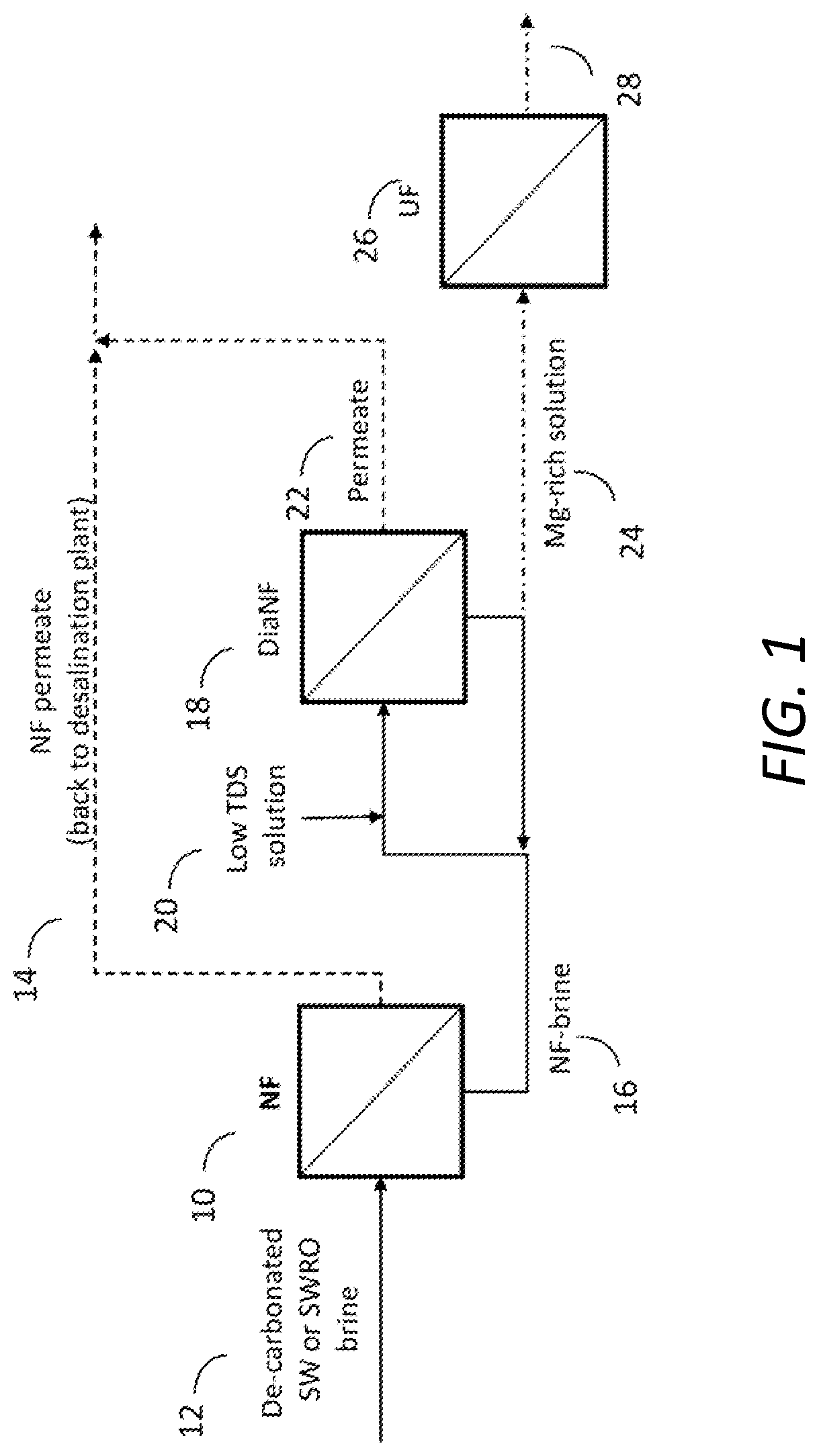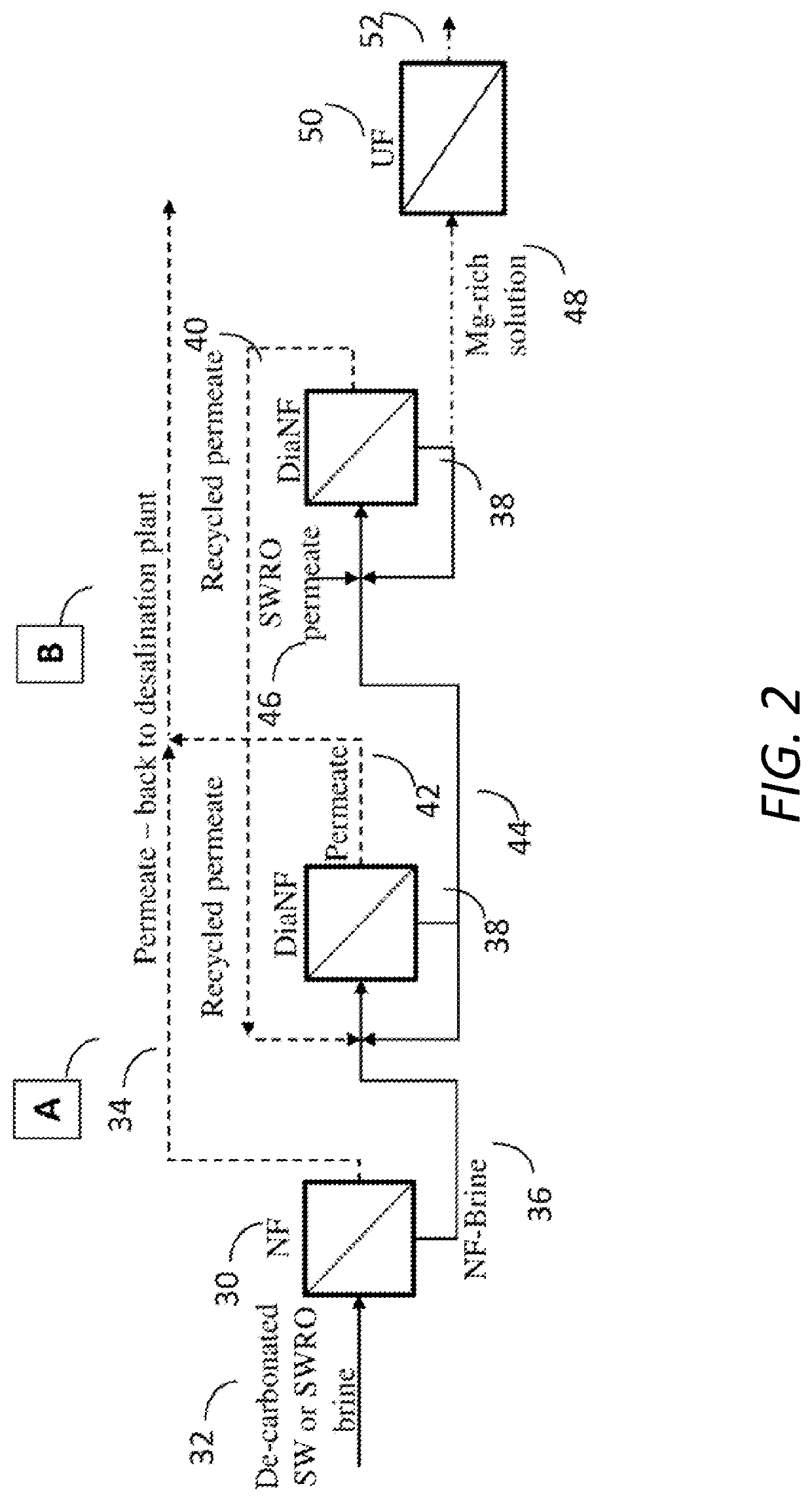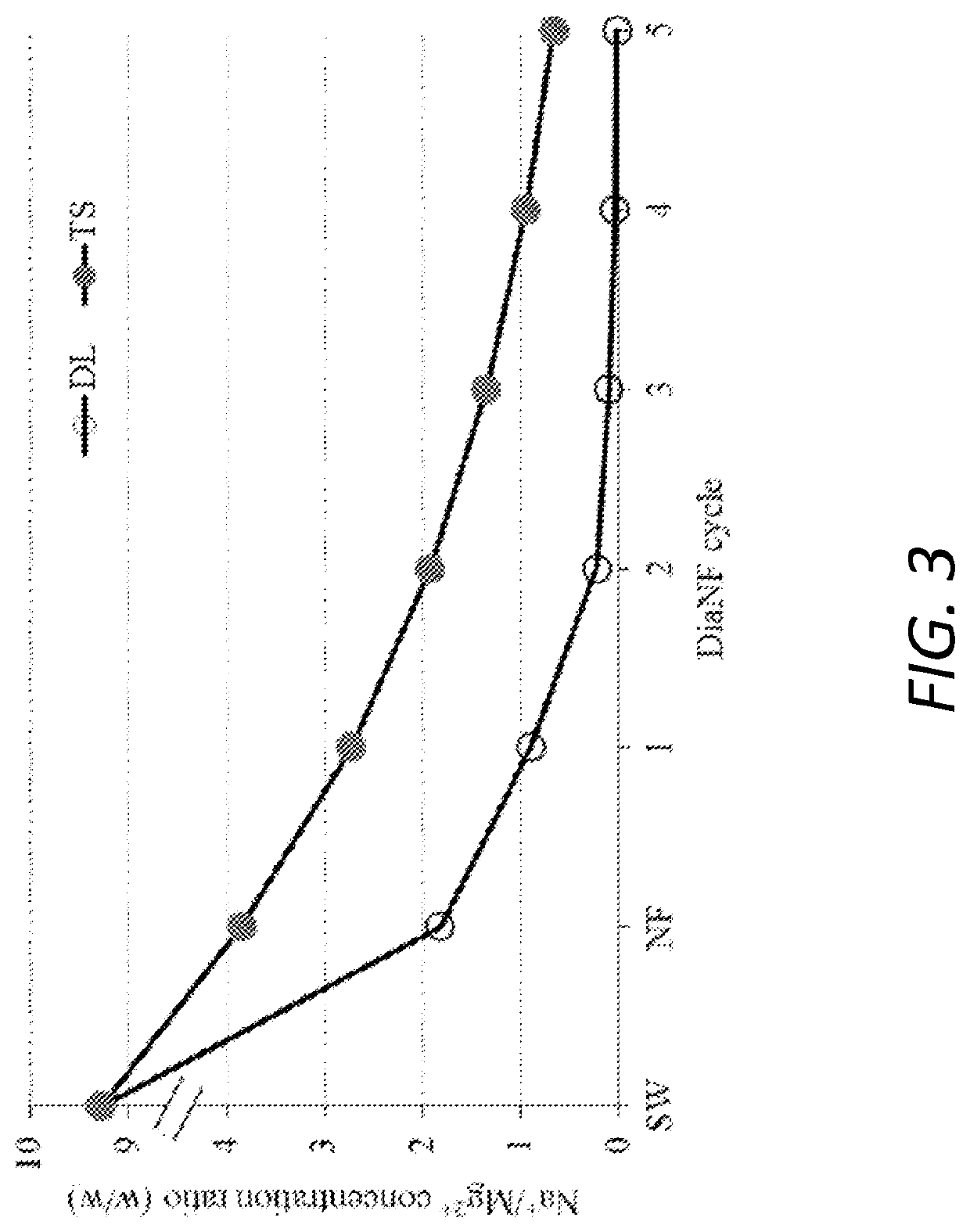Method for separation of magnesium and calcium ions from saline water, for improving the quality of soft and desalinated waters
a technology of calcium ions and saline water, which is applied in the field of nanofiltrationdiananofiltration (nfdianf) system, can solve the problems of inability to implement the process, the need for mgsup>2+/sup> in irrigation water, and the inability to enrich soft (desalinated) waters with 20 mgmg/l or more, and achieve the effect of improving the quality of the water
- Summary
- Abstract
- Description
- Claims
- Application Information
AI Technical Summary
Benefits of technology
Problems solved by technology
Method used
Image
Examples
example 1
DiaNanofiltration Process
[0089]DiaNF experiments were carried out using low pressure cross-flow modules accommodating a 2.5″ or a 4″ diameter, 40″ long spiral wound membrane element. The system includes an Osip riva-80 booster pump and Grundfos crn 1-27 high pressure pump. A chiller and stainless steel heat exchanger were used to maintain constant temperature of 25±2° C. All wetted piping was made of stainless steel. Flow rates and pressures were digitally and analogically measured. Two types of NF membranes were used in the experiments: Lentech DL-4040-F1021 Stinger, DL-2540-F1072 and TriSep 4040-TS80-TSF.
1.2 Experimental Procedure
[0090]Pretreated Mediterranean seawater was collected. Seawater pH was adjusted to pH4.0 using HCl and thereafter exposed to overnight air bubbling to obtain >95% CO2 degasification. Thereafter, the pH was elevated to 5.54.
[0091]First stage SWRO brine was produced in a pilot-scale seawater desalination unit (described in detail in [...
example 2
Reduction of the Cl− Concentration in the Product Solution
[0121]The NF-DiaNF process of the present invention was applied to achieve chloride minimization (i.e., reduce the TH / SO42− ratio), using a Nadir NP030 membrane. The feed was seawater. The pressure applied in the experiment was 20 bar. A high pressure vessel was placed on a magnetic stirrer and high stirring speed was maintained throughout the experiment. The permeate was collected in a measuring cylinder. Small volumes of samples of permeate were taken for ICP analysis at predefined volumes representing predefined recovery ratios.
[0122]The concentrations measured in the permeate water and in the initial feed solution were used for calculating the concentrations in the brine at each recovery ratio, based on mass balance equation:
VB·CB=VF0·CF0−VPA·CPA (1)
[0123]wherein C represents for solute concentration, and V represents the solution volume. The subscripts B, F0 and PA stand for the brine (accumulated brine), the initial fe...
example 3
Reduction of the Cl− Concentration in the Product Solution Using NF-DiaNF Process with NP030 Membrane
[0131]The NF-DiaNF process depicted in FIG. 9, was applied to achieve chloride minimization (i.e., reduce the TH / SO42− ratio), using a Nadir NP030 membrane. The feed was seawater (SW) or seawater brine (SWRO). The pressure applied in the experiment was 20 bar. A high pressure vessel was placed on a magnetic stirrer and high stirring speed was maintained throughout the experiment.
[0132]Table 7 shows results of an experiments in which the NP030 membrane was fed with SW and with SWRO brine at a pressure of 40 bar. Table 7 shows the average species concentrations developing in the retentate as a function of the applied recovery ratio. It can be seen that a ratio range of 1.48-1.55 (M / M) was attained between total hardness and SO42− at 75% recovery while at 90% recovery a ratio of 1.25-1.30 was attained (for both SW and SWRO brine). Table 7 shows that the rejection of the NP030 membrane t...
PUM
| Property | Measurement | Unit |
|---|---|---|
| pressure | aaaaa | aaaaa |
| temperature | aaaaa | aaaaa |
| pressure | aaaaa | aaaaa |
Abstract
Description
Claims
Application Information
 Login to View More
Login to View More - R&D
- Intellectual Property
- Life Sciences
- Materials
- Tech Scout
- Unparalleled Data Quality
- Higher Quality Content
- 60% Fewer Hallucinations
Browse by: Latest US Patents, China's latest patents, Technical Efficacy Thesaurus, Application Domain, Technology Topic, Popular Technical Reports.
© 2025 PatSnap. All rights reserved.Legal|Privacy policy|Modern Slavery Act Transparency Statement|Sitemap|About US| Contact US: help@patsnap.com



